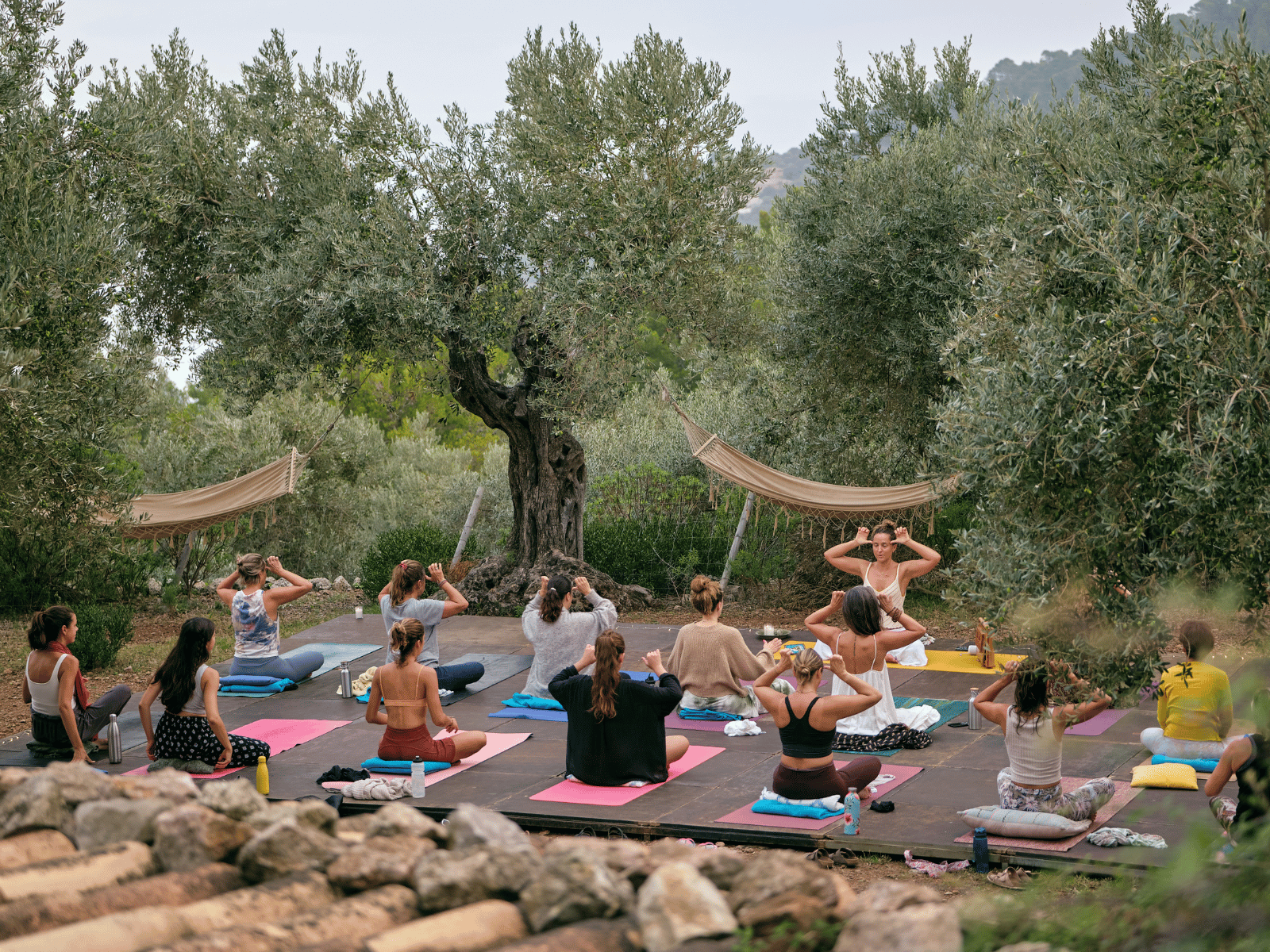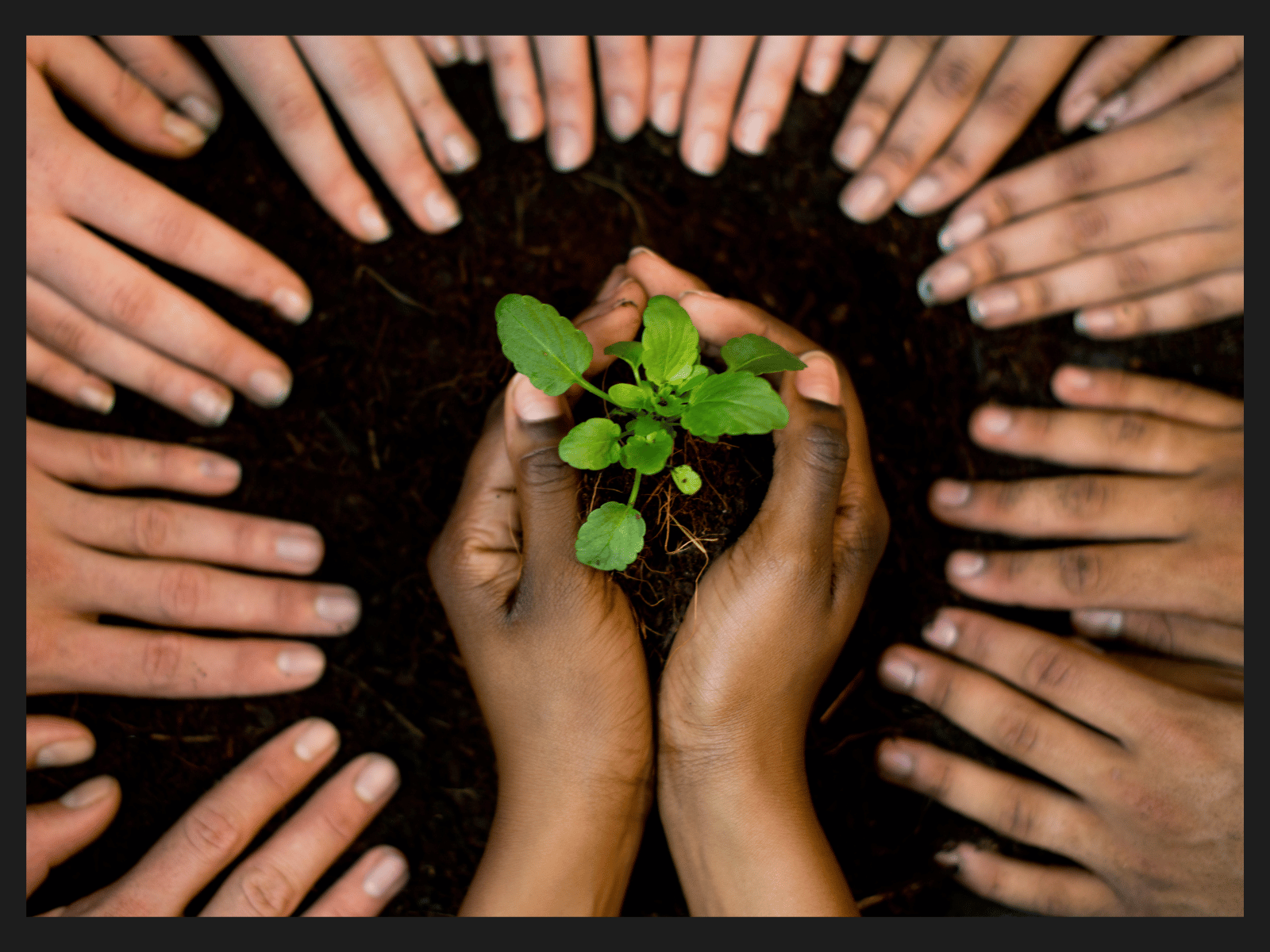The art of unrushing: SEO strategies for Slow & Experiential travel brands
Hey there, fellow travel lovers, eco-conscious consumers, and brand builders with a heart!
Ever felt like the digital world is just one big, crazy race? Everyone's desperate for attention, shouting keywords and trying to climb to the top of Google. It's exhausting, isn't it? Especially when your whole brand ethos is about… well, not rushing. It's all about enjoying, connecting, and experiencing.
If you're running an eco-lodge in a beautiful forest, a culinary tour that follows family recipes, a wellness retreat that focuses on healing, or any kind of travel experience that's really going to change your life, you know your audience isn't looking for a quick fix or a cheap treat. They're after depth, authenticity, connection and a story to tell. It's not just about booking a trip, it's about investing in an experience that'll enrich their lives.
So, why would your SEO strategy be any different? Why chase trends that won't last when your brand is all about timeless values?
Welcome to the art of unrushing: SEO strategies for slow and experiential travel brands. Forget the digital rat race; we're not just going on a mindful journey, we're building a lasting digital destination for your ideal travellers.
So, why "unrushing" SEO? Your audience isn't just browsing the web, they're actually looking for something specific.
Traditional SEO often focuses on volume, quick wins, and getting the biggest possible audience. It's like a mass-market tour operator trying to fit as many people as possible into a bus. But for slow and experiential travel, that's like trying to appreciate a fine, aged wine by drinking it straight from the bottle. It misses the point entirely.
Your ideal client isn't just searching for "cheap hotel near me" on Google. They're probably looking for something more subtle, more intentional and more in line with their values:
"Sustainable yoga retreat with ocean views and vegan meals"
"Authentic cooking class Greece farm stay"
"Mindful hiking tour Patagonia small group"
"Eco-friendly glamping family friendly Costa Rica"
"Cultural immersion program native community"
"Digital detox retreat no Wi-Fi"
See the profound difference? These aren't just keywords; they're intentions wrapped in dreams, desires, and deeply held values. They’re specific, they’re thoughtful, and they often reveal a willingness to invest more for the right experience. Your SEO needs to speak directly to those detailed aspirations, not just the surface-level search.
"Unrushing" SEO means aligning your digital strategy with your brand's core philosophy. It's about building authority and trust over time, attracting the right travellers who will cherish your offerings, become advocates, and return for more. It’s about quality over quantity, depth over trend, and genuine connection over short-term clicks. It’s about creating a digital presence that mirrors the profound, unique experiences you offer in the real world.
Read also: Exploring meaningful journeys with slow travel
Your mindful SEO toolkit: strategies for the unrushed traveller
Let's dive into how you can make Google fall in love with your slow-paced magic, without sacrificing your soul or your brand integrity.
The deep dive into keywords (beyond the obvious)
This isn't just about finding popular words; it's about understanding the language of your ideal traveller. It's about listening to their unspoken desires and crafting content that answers their deepest questions.
Embrace long-tail keywords: your Niche's best friend: forget trying to rank for "travel" or "hotel." That's a battle you don't need to fight. Instead, focus on phrases that are 3-5 words or longer. Think "sustainable family farm stay Crete," "immersive cultural experience Peru," "digital detox retreat Bali with organic food," or "wildlife photography workshop Amazon rainforest." These phrases have lower search volume but significantly higher conversion rates because they indicate specific intent.
How to find them: use tools like Google Keyword Planner, Ahrefs, SEMrush, or even free options like AnswerThePublic (for question-based keywords) and Google's "People Also Ask" section. Pay attention to forums, Facebook groups, and review sites where your audience discusses their travel desires.
Emotional & Experiential keywords: speaking to the soul: your brand sells feelings and transformations, not just beds. Think about the outcome and feeling your experience evokes. "Tranquil escape," "rejuvenating wellness," "authentic connection," "off-the-beaten-path adventure," "mindful exploration," "eco-conscious journey." How do your past guests describe their experience? Use their words!
Question keywords: be the answer: what questions are your potential guests typing into Google? "Where can I find an ethical wildlife tour?" "What are the best slow travel destinations in Europe?" "How to plan a responsible cultural immersion trip?" Create content that directly answers these questions. This positions you as an authority and a trusted resource.
Keyword Mapping & Intent: once you have your keywords, don't just sprinkle them randomly. Map them to specific pages on your website. Understand the intent behind each keyword:
Informational: "Benefits of slow travel," "History of [local craft]." (Blog posts, guides)
Navigational: "Your Brand Name contact," "Your Brand Name reviews." (About Us, Contact pages)
Commercial Investigation: "Best eco-lodges [region]," "Compare wellness retreats." (Comparison guides, detailed service pages)
Transactional: "Book [Your Tour Name]," "Reserve [Your Accommodation]." (Booking pages, specific package pages)
2. Content creation: your storytelling masterclass
This is where your brand truly shines and differentiates itself. Your content isn't just information; it's an invitation, a glimpse into the magic you offer.
Blog posts that inspire and educate: your blog should be a living testament to your brand's values. Don't just list amenities; paint a picture.
Go deep: write about the local culture, the philosophy behind your eco-practices, interviews with local artisans, recipes from your culinary tours, the history of your unique location.
Solve problems: address common concerns or questions your audience has (e.g., "How to pack for a mindful retreat," "Understanding responsible tourism in [your region]").
"Behind the scenes": share the passion of your team, the journey of building your sustainable practices, the stories of your local partners. This builds trust and connection.
Detailed itineraries & guides: don't be afraid to give away value. A comprehensive guide like "A week of mindful exploration in [your region]: A self-guided Journey" can be an SEO magnet, even if it's not directly selling your specific tour. It establishes you as an expert.
User-generated content (UGC): the authentic voice: encourage guests to share their stories, photos, and videos. Testimonials, reviews, and social media posts from real travellers are SEO gold. They build social proof, trust, and provide fresh, authentic content that Google loves. Integrate review platforms (like TripAdvisor, Google Reviews) directly into your site where appropriate.
Visual storytelling: show, don't just tell: high-quality, authentic photos and videos are non-negotiable for travel. Google loves rich media, and your audience needs to see the tranquility, the beauty, the authenticity of your experience.
Optimisation is key: always optimise image file sizes for faster loading. Use descriptive alt-text for every image (e.g.,
alt="Guests practicing yoga at sunrise eco-lodge overlooking Cretan beach"). For videos, include transcripts and detailed descriptions to help search engines understand the content. Consider embedding YouTube videos directly onto your site.Beyond text: explore podcasts, interactive maps, virtual tours, and engaging infographics. These diverse content formats can capture different audiences and keep visitors on your site longer.
3. On-Page SEO: the thoughtful layout
This is about making your website a joy to navigate for both humans and search engine robots. It's about clear signposts on your digital journey.
Compelling Title tags & Meta descriptions: These are your digital storefront signs. Make sure your page titles (the blue link in Google search results) and meta descriptions (the snippet below the link) are compelling, accurately reflect the unique experience offered, and include your target keywords. Keep title tags under 60 characters and meta descriptions under 160 characters to ensure they display fully.
Header Tags (H1, H2, H3...): structure and readability: use header tags to break up your content, making it easy to read and scan. Your H1 should be your main topic, and H2s and H3s should introduce sub-topics. This helps both users and search engines understand the hierarchy and flow of your content.
Internal linking strategy: think of your website as a network of interconnected experiences. Link relevant pages within your site (e.g., from a blog post about local cuisine to your culinary tour page). This helps distribute "link juice" and guides users deeper into your site, improving dwell time and reducing bounce rate.
Schema markup (the secret sauce for stand-out listings): this is like giving Google a cheat sheet about your content. Schema.org markup helps search engines understand the context of your information, leading to rich snippets in search results (like star ratings, event dates, or FAQs directly in the search results).
Relevant Schema Types: "Local Business," "Event," "Product" (for your tours/experiences), "Review," "Article," and "FAQPage" are particularly useful for travel brands. Implementing these can significantly boost your visibility.
User experience (UX) is SEO: A fast, mobile-friendly, easy-to-navigate, and visually appealing website isn't just good for users; it's a huge SEO factor. If users have a positive experience on your site, they'll stay longer, visit more pages, and are more likely to convert – all signals Google loves.
4. Technical SEO: the smooth journey behind the scenes
No one wants a bumpy ride, especially online. Technical SEO ensures your website is healthy, crawlable, and indexable by search engines.
Site speed: the need for speed (but not rushing!): A slow website is like a delayed flight – frustrating! Optimise images, leverage browser caching, minimize code, and consider a Content Delivery Network (CDN) to ensure your site loads quickly on all devices, especially mobile. Use Google's PageSpeed Insights to identify issues.
Mobile-friendliness: design for the On-the-Go Traveller: most people are researching and planning their next adventure on their phones. Your site must be beautiful and functional on mobile. Google's mobile-first indexing means they primarily use the mobile version of your content for ranking.
Secure site (HTTPS): trust and authority: It’s 2025. If your site isn't HTTPS (indicated by a padlock in the browser), Google gives it the side-eye. More importantly, it builds trust with your visitors, protecting their data.
Crawlability & indexability: helping Google find you:
XML Sitemaps: submit an XML sitemap to Google Search Console. This is like a map for search engines, showing them all the important pages on your site.
Robots.txt: use this file to tell search engines which pages not to crawl (e.g., admin pages).
Broken links: regularly check for and fix broken internal and external links. They create a bad user experience and signal a neglected site to Google.
Duplicate content: ensure you don't have multiple versions of the same content accessible to search engines, as this can dilute your SEO efforts.
Core Web Vitals: These are Google's metrics for user experience, focusing on loading performance, interactivity, and visual stability. Optimising these is crucial for ranking.
5. Link building: authentic connections, not just numbers
Forget buying dodgy links. For slow travel, link building is about fostering genuine partnerships and earning recognition from respected sources. It's about building a web of trust, not just a web of links.
Collaborate with like-minded brands & influencers: partner with other eco-tourism blogs, local artisan networks, wellness influencers, sustainable travel communities, or niche publications. Guest blog for them, and invite them to guest blog for you. This exposes you to new, relevant audiences and earns valuable backlinks.
Local love: be a community pillar: get listed on local tourism boards, chambers of commerce, community event calendars, and local business directories. This is crucial for local SEO and attracting travellers already in or planning to visit your area. Optimise your Google My Business profile meticulously.
Earned media & PR: the power of your story: provide such an incredible, unique experience that travel writers, journalists, and reputable bloggers want to feature you organically. Send out thoughtful press releases about new offerings, sustainability initiatives, or unique cultural programs. Focus on telling your story in a compelling way that resonates with their audience.
Resource pages & broken link building: find relevant websites that have "resource" or "links" pages. If they link to outdated or broken resources, reach out and suggest your content as a replacement.
Community engagement: participate in relevant online forums, Q&A sites (like Quora), and niche social media groups. Share your expertise and link back to your valuable content when it's genuinely helpful and relevant.
Measuring success: mindful metrics
For slow travel, it's not just about raw traffic numbers. It's about attracting the right traffic and understanding how deeply engaged they are.
Dwell time: how long are people staying on your pages? Longer times usually mean they're deeply engaged with your content and finding it valuable.
Bounce rate: are people leaving immediately after landing on a page? A high bounce rate might indicate your content isn't meeting their expectations or your targeting is off.
Conversion quality: are the inquiries you're getting from your SEO efforts leading to actual bookings from your ideal clients? Are they the kind of travellers who appreciate your unique offerings? This is the ultimate metric.
Engagement metrics: look beyond clicks. How many shares, comments, and saves are your blog posts and social media content receiving? These indicate resonance and brand advocacy.
Organic search visibility: track your keyword rankings, but also monitor your overall visibility for broad topics related to slow and experiential travel.
Referral traffic: where are your visitors coming from? Are your link-building efforts paying off with traffic from reputable sources?
Use tools like Google Analytics and Google Search Console to track these metrics. But remember, the goal isn't just numbers; it's about understanding your audience better and refining your digital journey to serve them more effectively.
Ready to unrush Your SEO?
Embracing "unrushing" in your SEO means moving with intention, focusing on quality over quantity, and truly understanding the profound journey your ideal client is on. It’s about building a digital presence that reflects the deep, unique, and transformative experiences you offer. It's a marathon, not a sprint, but the rewards are a loyal community and a thriving, purpose-driven business.
Feeling a bit overwhelmed by the digital landscape? That's where your marketing ma.ma comes in! If you're ready to make your authentic story heard and attract travellers who crave depth over speed, let's connect. I specialise in helping unique travel businesses like yours thrive online, crafting SEO-driven content, strategic plans, and targeted digital ads that truly resonate with the conscious traveller.
What's your favourite "unrushed" SEO tip or a challenge you've faced? Share in the comments below! Let's build a community of authentic travel brands!




